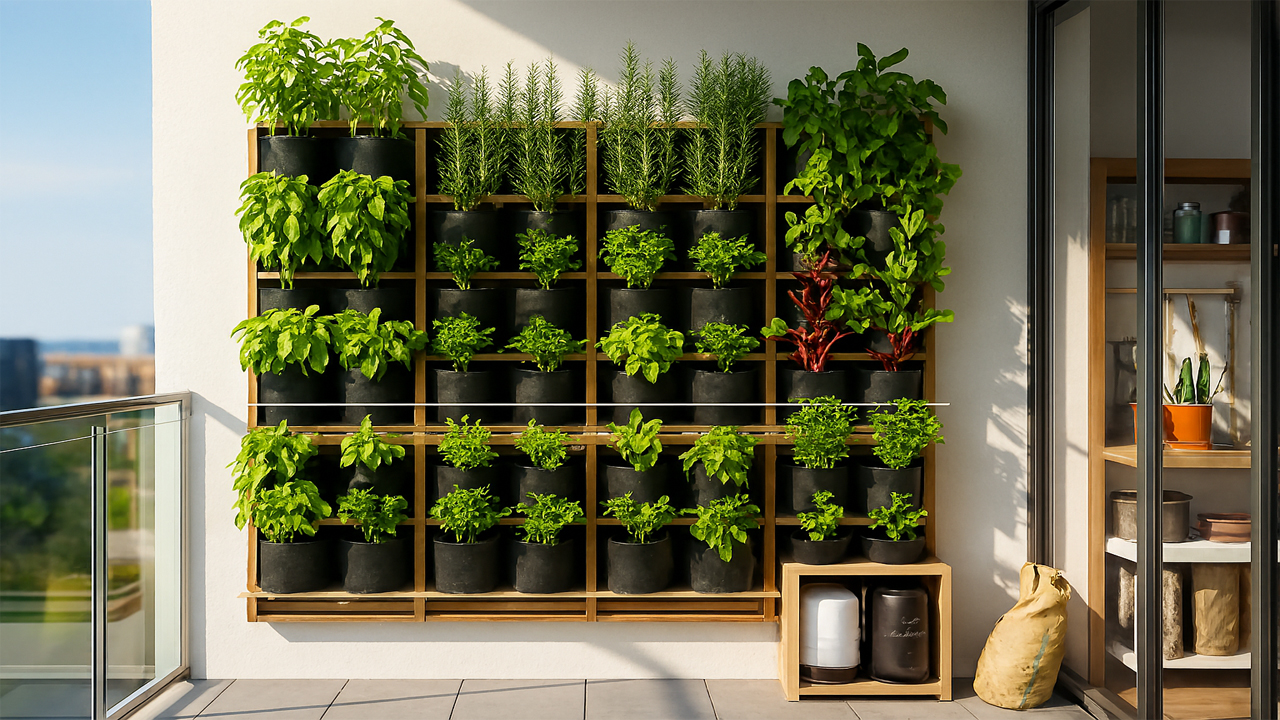Join on WhatsApp
Get the latest updates directly on WhatsApp – motivation, news & more!
Balcony gardening has become a popular way for city dwellers to bring a touch of greenery into their daily lives. For those who live in apartments or houses with limited outdoor space, a balcony can become a small oasis of nature. It offers a place to grow flowers, herbs, and even vegetables without the need for a large garden. Balcony gardening is not only a way to beautify your surroundings but also a means to improve mental well-being, air quality, and even save money by growing your own produce.
Choosing the Right Plants for Your Balcony
The first step in balcony gardening is deciding which plants will thrive in your space. Factors such as sunlight, wind exposure, and available space will influence your choices. Balconies that receive full sunlight for most of the day are perfect for sun-loving plants like tomatoes, peppers, basil, and marigolds. If your balcony is mostly shaded, opt for plants such as ferns, lettuce, mint, or begonias, which do well without direct sunlight. Always choose plants that suit your local climate and growing season.
Using Containers and Pots Effectively
Balcony gardening usually means working with containers instead of open soil. The choice of pots, planters, and grow bags plays a big role in the health of your plants. Containers should have good drainage holes to prevent waterlogging, which can lead to root rot. Materials like terracotta, ceramic, plastic, or metal each have their pros and cons. Lightweight containers are easier to move around, while heavier ones offer more stability during windy weather. Using a mix of small pots for herbs and larger containers for vegetables allows you to make the most of your space.
Maximizing Space with Vertical Gardening
When floor space is limited, the solution is to grow upwards. Vertical gardening techniques, such as hanging baskets, wall planters, and plant shelves, allow you to fit more greenery into your balcony without overcrowding it. Installing trellises for climbing plants like beans, cucumbers, or jasmine can add both beauty and practicality. Vertical structures not only save space but also create a lush, layered look that makes your balcony feel like a mini garden retreat.
Creating a Functional Layout
A successful balcony garden needs a layout that balances plant needs with your personal comfort. Leave enough walking space so you can access all your plants for watering and pruning. Group plants with similar sunlight and water needs together for easier care. Consider placing taller plants toward the back or sides so they don’t block sunlight from reaching smaller plants. If you use your balcony for relaxation, leave space for a small table and chair set so you can enjoy your garden comfortably.
Selecting the Right Soil and Fertilizers
Healthy plants start with healthy soil. Potting mix is usually better than garden soil for balcony gardening because it is lighter, drains better, and is less likely to compact in containers. Adding compost improves soil structure and provides essential nutrients for plant growth. Depending on the plants you choose, you may need to supplement with organic or synthetic fertilizers. Slow-release fertilizers are convenient because they feed plants over time, reducing the need for frequent applications.
Watering and Drainage Tips
Container plants tend to dry out faster than those in the ground, especially in sunny or windy conditions. Regular watering is essential, but overwatering can be just as harmful as underwatering. The key is to keep the soil moist but not soggy. Using self-watering pots or adding a layer of mulch on top of the soil can help retain moisture. Always ensure your containers have proper drainage holes so that excess water can escape, preventing root problems.
Adding Decorative Elements
A balcony garden is not only about plants; it’s also about creating an inviting atmosphere. Decorative elements like outdoor rugs, fairy lights, wind chimes, and colorful cushions can make your balcony a pleasant place to spend time. You can also choose pots and planters in different shapes, colors, and textures to add personality to the space. Combining greenery with decorative touches turns your balcony into a beautiful and functional extension of your home.
Growing Edible Plants
One of the most rewarding aspects of balcony gardening is growing your own food. Many vegetables and herbs adapt well to container growing. Cherry tomatoes, peppers, radishes, spinach, and strawberries are great options for beginners. Herbs like basil, mint, thyme, and parsley require little space and can be harvested regularly. Growing edible plants not only provides fresh produce but also brings the satisfaction of eating something you nurtured yourself.
Seasonal Care and Maintenance
A balcony garden needs attention throughout the year. During the warmer months, plants may require more frequent watering and protection from strong sunlight. In cooler seasons, you might need to move sensitive plants indoors or use covers to protect them from frost. Regularly check for pests and diseases, and prune plants to encourage healthy growth. Replacing seasonal plants keeps your balcony looking fresh and lively all year round.
Benefits of Balcony Gardening
Balcony gardening offers multiple benefits beyond aesthetics. Plants help improve air quality by absorbing carbon dioxide and releasing oxygen. Tending to a garden can reduce stress, improve mood, and encourage mindfulness. Growing your own vegetables and herbs can reduce grocery bills and ensure you have access to fresh, pesticide-free food. A balcony garden also supports local biodiversity by attracting pollinators such as bees and butterflies.
Conclusion
Balcony gardening is an enjoyable and practical way to make the most of small outdoor spaces. With thoughtful planning, the right plant selection, and some creativity, even a modest balcony can become a thriving green retreat. Whether you aim to grow flowers for beauty, herbs for cooking, or vegetables for the table, your balcony can become a space that brings joy, relaxation, and a touch of nature to your daily life.
